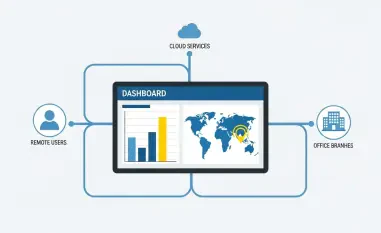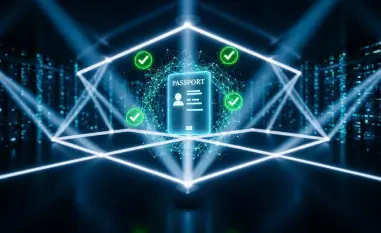The cybersecurity landscape is rapidly evolving, driven by the increasing sophistication of cyber threats and the growing reliance on digital infrastructure. As organizations worldwide strive to protect their digital assets, the demand for skilled cybersecurity professionals has surged. This article explores the current trends, key responsibilities, and emerging specializations within the cybersecurity job market in 2024.
Rising Demand for Cybersecurity Professionals
Global Need for Cybersecurity Experts
The demand for cybersecurity professionals is not confined to any single region. Countries such as the USA, Israel, Germany, Italy, the United Kingdom, Ireland, France, Singapore, Canada, and the UAE are all experiencing a significant need for experts in this field. This global trend underscores the universal importance of cybersecurity across various industries and regions. As cyber threats become more advanced and pervasive, businesses and government agencies are prioritizing the recruitment of talented cybersecurity personnel to safeguard their networks, systems, and digital assets. This has led to an unprecedented surge in job openings, reflecting the critical role cybersecurity plays in maintaining the integrity and security of our increasingly digital world.
Key Drivers of Demand
Several factors are driving the increased demand for cybersecurity professionals. The proliferation of cyber threats, the expansion of digital transformation initiatives, and the implementation of stringent regulatory requirements are all contributing to the need for skilled individuals who can safeguard digital assets and infrastructure. Cybercrime is becoming more sophisticated, targeting a wide array of sectors including finance, healthcare, and government institutions. As a result, organizations are seeking professionals who can not only respond to current threats but also anticipate and mitigate future risks. Additionally, the rise of the Internet of Things (IoT) and cloud computing has further complicated the cybersecurity landscape, necessitating advanced skills and new approaches to secure interconnected devices and data.
Core Responsibilities in Cybersecurity Roles
Security Assessments and Vulnerability Management
One of the primary responsibilities across most cybersecurity roles is conducting security assessments and managing vulnerabilities. Professionals are tasked with performing vulnerability scans, identifying risks, and implementing mitigation strategies to maintain a robust security posture and prevent data breaches. This process involves using a variety of tools and methodologies to detect weaknesses in an organization’s IT infrastructure and applications. By regularly assessing their systems, organizations can stay ahead of potential threats, ensuring that any vulnerabilities are addressed before they can be exploited by malicious actors.
Threat Modeling and Mitigation
Threat modeling is another critical responsibility, involving the identification of potential attack vectors and system weaknesses. By proactively anticipating and addressing security risks, organizations can better protect their digital environments from potential threats. This process requires a deep understanding of how cyber attacks are executed and the ability to think like a hacker to uncover potential vulnerabilities. Once identified, these risks are systematically mitigated through the implementation of security measures and controls, enhancing the organization’s overall defense mechanisms. This proactive approach is essential for maintaining the integrity of sensitive data and ensuring uninterrupted business operations.
Compliance and Regulatory Adherence
Ensuring Compliance with Security Standards
Compliance with industry standards such as OWASP and various regional security regulations is a common requirement. Cybersecurity professionals must ensure that their organizations meet legal requirements and adhere to best practices, thereby minimizing the risk of non-compliance penalties and enhancing overall security. These standards provide a framework for establishing robust security policies and procedures, guiding organizations in implementing effective security measures. Adhering to these guidelines not only helps protect against cyber threats but also builds trust with customers and partners, demonstrating a commitment to maintaining the highest levels of security and data protection.
Role of Security Tools and Technologies
Proficiency with a range of cybersecurity tools, including SIEM systems, DLP technologies, and cryptographic devices, is essential. These tools play a crucial role in detecting and responding to threats, protecting sensitive data, and maintaining overall security. Security Information and Event Management (SIEM) systems, for instance, provide real-time analysis of security alerts generated by applications and network hardware, helping organizations identify and respond to potential threats quickly. Data Loss Prevention (DLP) tools, on the other hand, help prevent sensitive data from being accessed or transmitted without authorization, while cryptographic devices ensure that data remains secure during transmission. Mastery of these tools is fundamental for modern cybersecurity professionals, enabling them to stay one step ahead of cyber adversaries.
Incident Response and Security Operations
Coordinating Security Operations Centers (SOCs)
Incident response is a vital aspect of cybersecurity, with many roles focusing on the coordination of Security Operations Centers (SOCs). Efficient incident response mechanisms are crucial for minimizing the impact of security breaches and ensuring swift recovery. SOCs serve as the central command for monitoring, detecting, and responding to cyber threats in real-time, mobilizing resources and coordinating efforts to contain and mitigate security incidents. Teams working in SOCs are responsible for continuously analyzing security data, identifying suspicious activities, and implementing immediate countermeasures to prevent further damage and restore normal operations as quickly as possible.
Enhancing Security Awareness
Cybersecurity professionals are also responsible for promoting security awareness within their organizations. This involves mentoring and training staff, ensuring that everyone understands the importance of cybersecurity and knows how to respond to potential threats. Training programs often include best practices for protecting sensitive information, recognizing phishing attempts, and following secure authentication procedures. By fostering a culture of security awareness, organizations can significantly reduce the risk of human error, which remains one of the leading causes of security breaches. Continuous education and awareness efforts empower employees to become the first line of defense against cyber threats, contributing to the overall cybersecurity posture of the organization.
Specializations in Cybersecurity
Offensive Security and Penetration Testing
The field of cybersecurity is becoming increasingly specialized, with roles such as Offensive Security Engineer and Senior Penetration Tester requiring specific skill sets. These professionals focus on identifying and exploiting vulnerabilities to help organizations strengthen their defenses. Penetration testers simulate cyber attacks to uncover weaknesses in systems, networks, and applications, providing detailed reports and recommendations for remediation. This proactive approach allows organizations to address security gaps before they can be exploited by malicious actors, making penetration testing an essential component of a comprehensive cybersecurity strategy.
Product Cybersecurity and Secure Software Development
Another area of specialization is product cybersecurity, where professionals ensure that digital products are secure from the outset. This includes integrating security controls into software design and promoting secure coding practices to reduce vulnerabilities. Secure software development practices help prevent common security flaws, such as SQL injection, cross-site scripting, and buffer overflows, that can be exploited by attackers. By embedding security into the development lifecycle, organizations can produce resilient software that can withstand cyber threats, reducing the risk of costly breaches and enhancing the overall security of their digital products.
Cloud and Application Security
Securing Cloud Environments
With the growing reliance on cloud solutions, ensuring the security of cloud environments has become a primary focus. Cybersecurity professionals must be adept at implementing cloud-specific security protocols and strategies to protect sensitive data and applications. This includes configuring cloud security services, managing access controls, and monitoring for suspicious activities. As more organizations migrate their operations to the cloud, the need for professionals with expertise in securing cloud infrastructure has increased dramatically. Effective cloud security practices ensure that data stored and processed in the cloud remains confidential, available, and intact despite the ever-evolving threat landscape.
Application Security Engineering
Application Security Engineers play a crucial role in conducting in-depth security assessments, including vulnerability scanning and code reviews. They ensure that applications are built with security in mind, reducing the risk of vulnerabilities from the outset. These engineers collaborate closely with development teams to integrate security into the software development lifecycle, identifying and addressing potential flaws before they can be exploited. By implementing secure coding practices and conducting regular security audits, Application Security Engineers help organizations develop robust applications that can withstand cyber-attacks, safeguarding sensitive data and maintaining the integrity of critical business functions.
Identity and Access Management (IAM)
Managing Digital Identities
Secure management of digital identities and access rights is another critical aspect of cybersecurity. Professionals in this area focus on protecting sensitive systems and data from unauthorized access, ensuring that only authorized individuals can access critical resources. Effective IAM practices involve establishing policies for user authentication, authorization, and auditing, as well as managing the lifecycle of digital identities. By implementing strong identity management controls, organizations can reduce the risk of data breaches, protect user privacy, and ensure compliance with regulatory requirements.
Implementing IAM Solutions
Implementing effective IAM solutions involves configuring and managing tools that control access to digital assets. This includes developing policies and procedures to ensure that access rights are granted appropriately and monitored continuously. IAM solutions provide a centralized framework for managing user identities and access privileges, streamlining the authentication process, and enhancing security across the organization. By leveraging advanced IAM technologies, such as multi-factor authentication and role-based access control, cybersecurity professionals can enforce stringent access controls, ensuring that only authorized users can access sensitive data and systems. This not only reduces the risk of unauthorized access but also helps organizations maintain a strong security posture.
Leadership and Strategic Roles
Senior-Level Positions in Cybersecurity
Senior-level positions, such as Director SOC (InfoSec) and Senior Manager, Security Architecture, are pivotal for steering the security direction of organizations. These roles involve developing comprehensive security strategies and overseeing critical cybersecurity projects across various sectors. Leaders in these positions are responsible for setting the vision and direction for the organization’s security initiatives, ensuring that they align with business objectives and regulatory requirements. They also oversee the implementation of security programs, manage cross-functional teams, and provide guidance on the latest security trends and technologies. By crafting and executing robust security strategies, senior cybersecurity leaders play a critical role in protecting their organizations from cyber threats and ensuring long-term resilience.
Cross-Functional Collaboration
The cybersecurity landscape is changing rapidly due to the rising sophistication of cyber threats and the increasing reliance on digital infrastructure. As organizations around the globe work to secure their digital assets, the need for skilled cybersecurity professionals has skyrocketed. With 2024 approaching, the cybersecurity job market is experiencing significant shifts, and it’s crucial to understand the current trends, core responsibilities, and new specializations emerging within the field.
Key trends include the growing importance of cloud security, the rise of artificial intelligence and machine learning for threat detection, and the increasing significance of regulatory compliance. Cybersecurity professionals are now required to handle a wide range of responsibilities, from safeguarding networks and data to conducting security audits and responding to incidents.
Emerging specializations within the field are gaining prominence. These include roles like cloud security architects, cybersecurity auditors, and threat intelligence analysts. As the digital world continues to grow and evolve, the demand for specialized skills and knowledge in cybersecurity will only become more critical.













